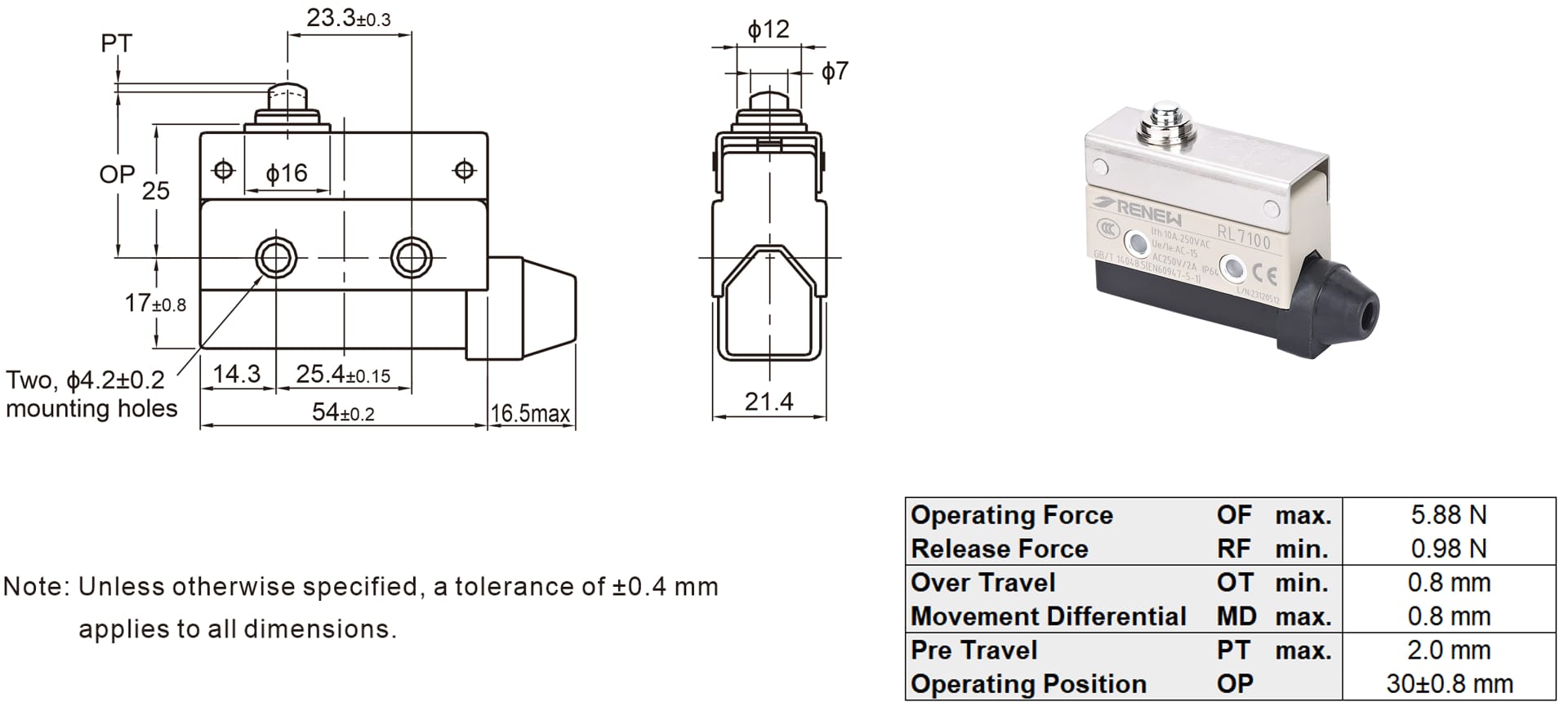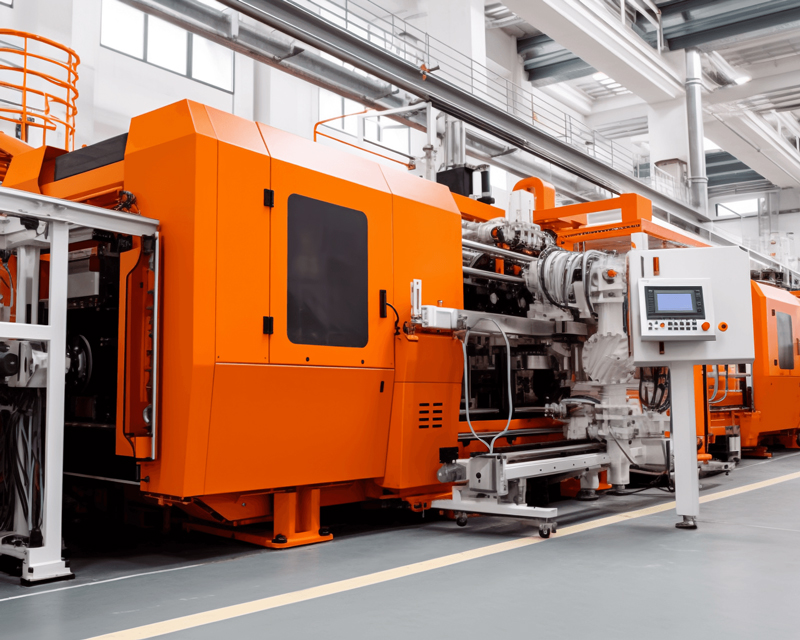Spring Plunger Horizontal Limit Switch
-

Rugged Housing
-

Reliable Action
-

Enhanced Life
Product Description
Renew’s RL7 series horizontal limit switches are designed for high repeatability and durability, up to 10 million operations of mechanical life. The spring plunger actuator ensures accurate switch performance with minimal differential travel. The strong outer case of the RL7 series protects the built-in switch from external forces, moisture, oil, dust and dirt so that it can be used in harsh industrial conditions where normal basic switches could not be used.
Dimensions and Operating Characteristics

General Technical Data
| Ampere rating | 10 A, 250 VAC |
| Insulation resistance | 100 MΩ min. (at 500 VDC) |
| Contact resistance | 15 mΩ max. (initial value for the built-in switch when tested alone) |
| Dielectric strength | Between contacts of same polarity 1,000 VAC, 50/60 Hz for 1 min |
| Between current-carrying metal parts and ground, and between each terminal and non-current-carrying metal parts 2,000 VAC, 50/60 Hz for 1 min |
|
| Vibration resistance for malfunction | 10 to 55 Hz, 1.5 mm double amplitude (malfunction: 1 ms max.) |
| Mechanical life | 10,000,000 operations min. (50 operations/min) |
| Electrical life | 200,000 operations min. (under the rated resistance load, 20 operations/min) |
| Degree of protection | General-purpose: IP64 |
Application
Renew’s horizontal limit switches play a critical role in ensuring the safety, precision, and reliability of various devices across different fields. Here are some popular or potential application.

Industrial Machinery
Used in industrial applications such as industrial air compressors, hydraulic and pneumatic systems, CNC machines to limit the maximum movement for pieces of equipment, ensuring precise positioning and safe operation during processing. For example, in a CNC machining center, limit switches may be installed at the endpoints of each axis. As the machine head moves along an axis, it eventually hits the limit switch. This signals the controller to stop the movement to prevent over-travel, ensuring accurate machining and protecting the machine from damage.













